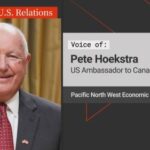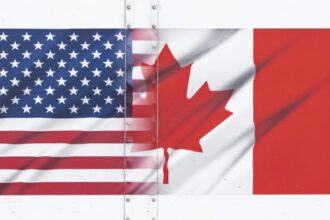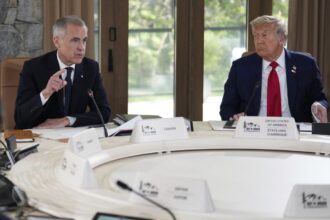The specter of trade wars has returned to haunt the North American economic landscape. As Donald Trump threatens to impose sweeping tariffs on Canadian goods should he return to the White House, Ottawa faces a critical strategic challenge that could define our economic trajectory for years to come. The potential 10-25% tariffs represent more than just economic friction—they signal a fundamental shift in how Canada must position itself in an increasingly protectionist world.
History has taught us that when it comes to trade disputes with our southern neighbor, Canada’s playbook requires finesse rather than force. During previous tariff conflicts, including the aluminum and steel disputes of 2018, Canada demonstrated remarkable tactical sophistication by targeting products from politically sensitive regions in the U.S. This approach—precision over brute force—reflects our reality as the smaller economic partner in this relationship.
“The art of winning a trade war when you’re the smaller partner isn’t about matching tariff for tariff,” explains Dr. Marielle Lavoie, international trade economist at Université de Montréal. “It’s about applying pressure where it hurts politically while minimizing self-inflicted damage.”
This strategic asymmetry demands that Canada approach any potential trade conflict with surgical precision. While the U.S. can afford broad, sweeping tariffs, Canada must target products from swing states or regions represented by influential lawmakers. Think Kentucky bourbon, Florida orange juice, or Michigan auto parts—products whose producers have powerful voices in Washington.
The challenges facing Canadian policymakers extend beyond mere tariff retaliation. Our deeply integrated supply chains mean that punitive measures can ricochet in unexpected ways, harming Canadian businesses that rely on American inputs. This economic interdependence creates a complex calculus where the line between striking back and self-sabotage becomes perilously thin.
Canada’s most effective approach may lie in coalition-building. By aligning with other affected nations and working through multilateral institutions like the WTO, Canada can amplify its influence. The EU, Mexico, and Japan share concerns about American protectionism, creating natural partnerships for coordinated responses.
“International solidarity becomes critical currency in trade disputes,” notes former Canadian trade negotiator Caroline Renaud. “When multiple economies speak with one voice, even the largest markets must listen.”
Beyond traditional trade tools, Canada’s strategic arsenal should include diversification as a long-term defense. The EU-Canada Comprehensive Economic and Trade Agreement (CETA) and Comprehensive and Progressive Agreement for Trans-Pacific Partnership (CPTPP) provide frameworks for reducing our dangerous dependence on the American market. While the U.S. will always remain our primary trading partner due to geography and history, cultivating alternative markets creates bargaining leverage and economic resilience.
Public messaging also plays a crucial role in this economic chess match. Canadian officials must walk a delicate line, standing firm against unfair treatment while avoiding inflammatory rhetoric that could escalate tensions. This means emphasizing facts that resonate with American audiences—that Canada is the largest export market for most U.S. states, that millions of American jobs depend on Canadian trade, and that our economic relationship has historically benefited both nations.
The private sector, meanwhile, must prepare for turbulence. Companies with significant cross-border operations should develop contingency plans, identify vulnerable supply chains, and consider redundancies that might prove valuable during disruptions. This isn’t alarmism—it’s prudent risk management in an era where economic nationalism increasingly trumps free trade orthodoxy.
What often gets overlooked in discussions of trade wars is the human element. Behind tariff numbers and trade statistics are communities, workers, and families whose livelihoods hang in the balance. In sectors like dairy, lumber, and manufacturing, trade disruptions can devastate entire towns that have built their economies around cross-border commerce.
As Canadians, we must recognize that our trade strategy isn’t just about macroeconomic outcomes—it’s about protecting vulnerable communities and industries while maintaining our commitment to rules-based international trade. This doesn’t mean capitulation to unreasonable demands, but rather a clear-eyed assessment of where we can absorb impacts and where we must draw firm lines.
The coming years may test Canada’s trade resilience in unprecedented ways. Our success will depend not on matching American economic might—an impossible task—but on leveraging our strengths: diplomatic skill, international relationships, targeted economic pressure, and a sophisticated understanding of American political dynamics.
Canada has navigated these waters before and emerged with our economic sovereignty intact. With strategic patience, multilateral cooperation, and precise application of counter-measures, we can weather whatever trade storms gather on the horizon. The question isn’t whether Canada can win a trade war—it’s whether we can ensure that nobody loses one.
For more insights on international relations and economic trends, visit CO24 Trends and CO24 Opinions for our continuing coverage of this evolving situation.

























